Rio Grande Wild Turkey
- February 23, 2024
- 0 comment
The Rio Grande Wild Turkey, a subspecies of the wild turkey native to the central plains region of the United States, is a fascinating creature renowned for its striking appearance and unique behaviors. With its bronze-colored iridescent plumage, long legs, and distinctive beard-like feathers on males, these turkeys stand out amidst the open woodlands, brushlands, and grasslands they call home. Preferring habitats near water sources like rivers and streams, they thrive in regions with a mix of mesquite, oak, and juniper trees. Social by nature, Rio Grande Wild Turkeys are often spotted in flocks led by a dominant male, communicating through a variety of vocalizations, especially during the mating season.
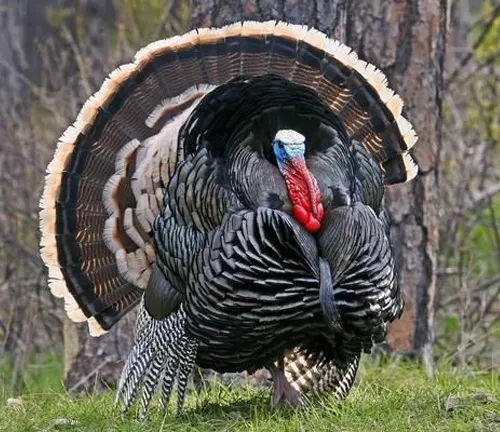
Omnivorous in diet, they forage on the ground for seeds, fruits, insects, and small reptiles. Breeding in the spring, females build nests on the ground, hidden in dense vegetation, where they lay their eggs. Despite their adaptability, these turkeys face threats from habitat loss, predation, and hunting, making conservation efforts crucial for their survival. With their cultural significance, ecological importance, and unique characteristics, the Rio Grande Wild Turkey holds a special place in the hearts of wildlife enthusiasts and conservationists alike.
| Specifications | Details |
|---|---|
| Scientific Name | Meleagris gallopavo intermedia |
| Common Name | Rio Grande Wild Turkey |
| Native Range | Central plains region of the United States |
| Habitat | Open woodlands, brushlands, grasslands |
| Preferred Habitat Features | Near water sources, mix of mesquite, oak, juniper |
| Plumage Color | Bronze-colored iridescent |
| Physical Features | Long legs, beard-like feathers on males |
| Social Behavior | Often found in flocks led by dominant males |
| Vocalizations | Gobbles, clucks, purrs |
| Diet | Omnivorous, seeds, fruits, insects, small reptiles |
| Breeding Season | Spring |
| Nesting Habits | Ground nests concealed in dense vegetation |
| Threats | Habitat loss, predation, hunting |
| Conservation Status | Conservation efforts crucial for survival |
| Cultural Significance | Important food source, valued in folklore |
| Ecological Importance | Seed dispersal, insect control, prey for predators |
| Unique Characteristics | Adaptability, distinct behaviors |
Rio Grande Wild Turkey, scientifically known as Meleagris gallopavo intermedia, is a subspecies of the wild turkey native to the central plains region of the United States, particularly Texas, Oklahoma, Kansas, and parts of New Mexico.
Habitat and Distribution
These turkeys prefer habitats consisting of open woodlands, brushlands, and grasslands near water sources such as rivers and streams. They are commonly found in regions with a mix of mesquite, oak, and juniper trees. Here’s information about the habitat and distribution of the Rio Grande Wild Turkey:
Habitat
The Rio Grande Wild Turkey thrives in a variety of habitats within its range, primarily preferring open woodlands, brushlands, and grasslands. They are commonly found in areas with a mix of mesquite, oak, and juniper trees. These turkeys also favor habitats near water sources such as rivers, streams, and creeks. Additionally, they are adaptable birds and can inhabit areas with varying degrees of vegetation density, as long as suitable roosting and nesting sites are available.
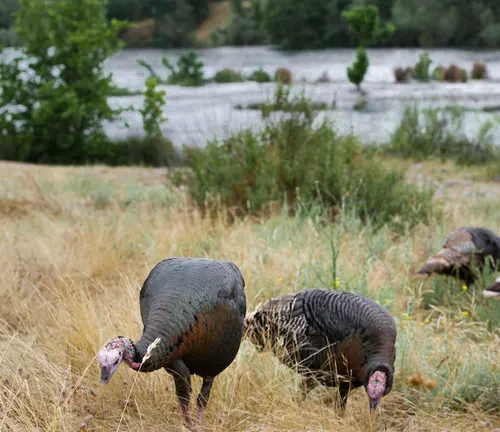

Distribution
The Rio Grande Wild Turkey is primarily distributed throughout the central plains region of the United States. Their range encompasses states such as Texas, Oklahoma, Kansas, and parts of New Mexico. Within this range, they can be found in both rural and suburban areas, sometimes venturing into agricultural lands or urban environments in search of food and suitable habitat. While they have a stable presence in their native range, localized populations may vary based on factors such as habitat availability and hunting pressure. Overall, the Rio Grande Wild Turkey’s distribution is influenced by the availability of suitable habitat, water sources, and food resources within its range.
Physical Characteristics
Rio Grande Wild Turkeys are characterized by their bronze-colored iridescent plumage and long legs. Males, known as toms, have distinctive beard-like feathers protruding from their chests, while females, called hens, lack these features. They have sharp spurs on their legs, which they use for defense.
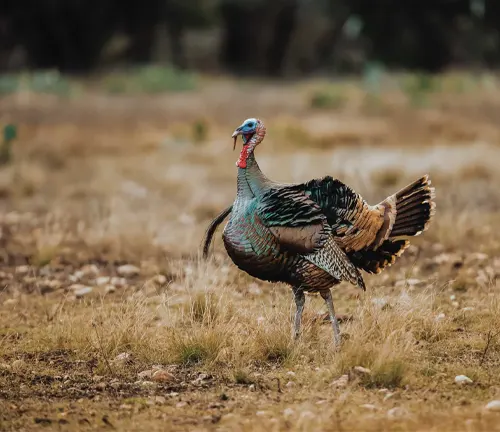
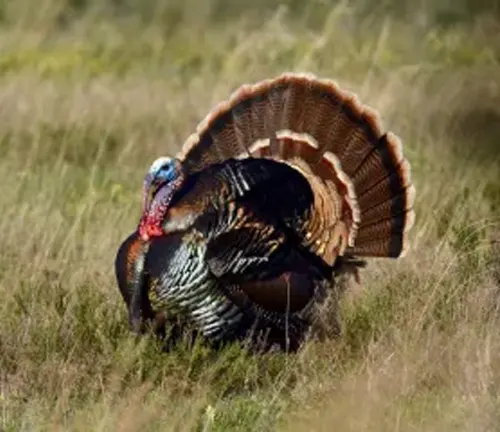
- Plumage: Rio Grande Wild Turkeys have striking bronze-colored iridescent plumage that shines in the sunlight. The feathers on their body exhibit a mix of bronze, copper, and green hues, giving them a vibrant appearance.
- Size: These turkeys are large birds, with adult males (toms) typically being larger than females (hens). Toms can weigh between 18 to 24 pounds on average, while hens are slightly smaller, weighing between 8 to 12 pounds.
- Body Shape: Rio Grande Wild Turkeys have a robust body with a rounded profile. They have long, muscular legs that enable them to move swiftly on the ground and navigate through various types of terrain.
- Head and Neck: Their heads are relatively small in proportion to their body, with a fleshy, wattle-like structure called a snood that hangs from the beak. Males have a more prominent snood than females. Both males and females have a caruncle, a fleshy growth, on their head. Their necks are slender and elongated, allowing them to stretch their heads to reach food.
- Beard: One of the most distinctive features of male Rio Grande Wild Turkeys is their beard. This is a cluster of hair-like feathers that protrude from the center of their chests. The beard can vary in length but is typically longer in older males.
- Wings: Rio Grande Wild Turkeys have broad, rounded wings that enable them to fly short distances. While they are not strong fliers compared to other bird species, their wings are essential for escaping predators and roosting in trees at night.
- Tail: Their tails are long and fan-shaped, consisting of stiff, pointed feathers that can be fanned out or folded against the body. The tail is often displayed during courtship displays and when the turkey is alarmed.
Behavior and Social Structure
These turkeys are social birds, often seen in flocks consisting of several hens and their offspring led by a dominant tom. They communicate through various vocalizations, including gobbles, clucks, and purrs, especially during the mating season.
Behavior
Rio Grande Wild Turkeys are social birds that exhibit a range of behaviors adapted to their natural environment. Some key behavioral traits include:
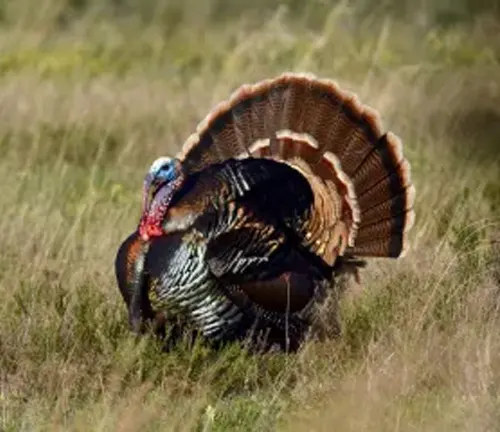
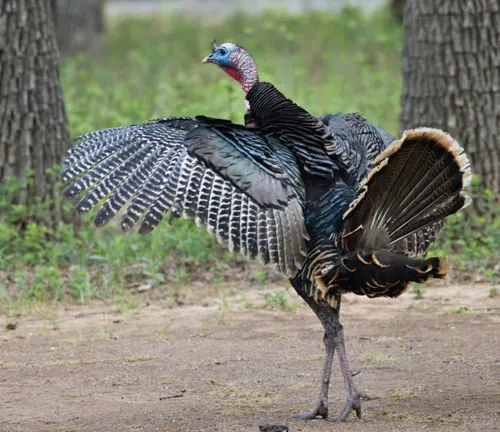
- Foraging: These turkeys spend much of their time foraging for food on the ground. They use their keen eyesight and scratching ability to uncover seeds, fruits, insects, and small reptiles hidden in leaf litter and vegetation.
- Vocalizations: Rio Grande Wild Turkeys are vocal birds, communicating with each other through a variety of vocalizations. These include gobbling, clucking, purring, and yelping sounds. Vocalizations are used for various purposes, including mate attraction, establishing dominance, and warning of danger.
- Roosting: At night, Rio Grande Wild Turkeys roost in trees for protection from predators. They gather in groups and select trees with sturdy branches and dense foliage to perch on.
- Courtship Displays: During the breeding season in spring, male turkeys engage in elaborate courtship displays to attract females. These displays involve puffing up their plumage, strutting, fanning out their tails, and emitting loud vocalizations to impress potential mates.
- Territorial Behavior: Male Rio Grande Wild Turkeys can be territorial, especially during the breeding season. They may engage in displays of dominance and aggression towards rival males to establish breeding territories and access to females.
Social Structure
Rio Grande Wild Turkeys exhibit a hierarchical social structure within their flocks. Some key aspects of their social structure include:

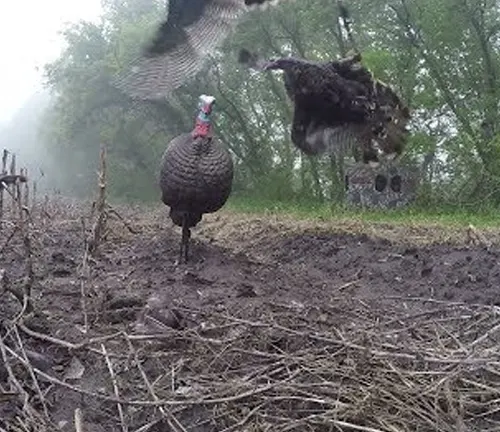
- Flock Dynamics: Rio Grande Wild Turkeys often form flocks consisting of several hens and their offspring led by a dominant male, known as a tom. These flocks provide safety in numbers and facilitate foraging and breeding activities.
- Dominance Hierarchy: Within the flock, there is a dominance hierarchy established through interactions between individuals. Dominant toms assert their authority through displays of aggression and vocalizations, while subordinate males and females typically defer to the dominant individuals.
- Family Units: Female Rio Grande Wild Turkeys, known as hens, play a central role in raising their young, known as poults. Hens protect their poults, teach them essential survival skills, and lead them in search of food.
- Communication: Social interactions within the flock are facilitated through vocalizations and body language. Turkeys use a range of vocalizations and visual displays to communicate dominance, submission, and reproductive readiness.
Diet and Feeding Habits
Rio Grande Wild Turkeys are omnivores, feeding on a diverse diet that includes seeds, fruits, insects, and small reptiles. They forage on the ground, using their keen eyesight and scratching ability to uncover food.
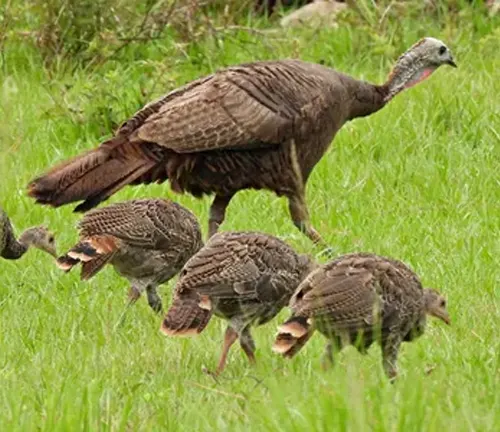
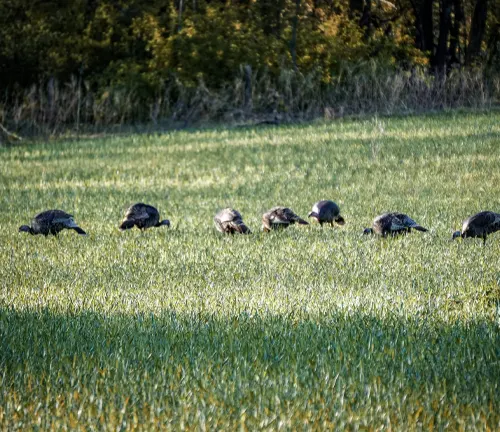
Diet
Rio Grande Wild Turkeys are omnivorous birds, meaning they consume a diverse range of food items from both plant and animal sources. Their diet consists of:
- Seeds and Grains: Rio Grande Wild Turkeys feed on a variety of seeds and grains found on the ground, including those from grasses, weeds, and agricultural crops such as corn and wheat.
- Fruits and Berries: They consume a variety of fruits and berries, including those from native shrubs and trees such as juniper, mesquite, and hackberry. Fruits provide essential nutrients and moisture, especially during dry periods.
- Insects and Invertebrates: Rio Grande Wild Turkeys supplement their diet with insects, worms, snails, and other invertebrates found in leaf litter and soil. They use their keen eyesight and scratching ability to uncover these protein-rich food items.
- Small Reptiles and Amphibians: Occasionally, Rio Grande Wild Turkeys may prey on small reptiles such as lizards and amphibians such as frogs if they encounter them while foraging.
Feeding Habits
Rio Grande Wild Turkeys exhibit several feeding habits adapted to their natural environment. These include:
- Ground Foraging: They spend much of their time foraging for food on the ground, using their sharp beaks to peck and scratch at the soil. They are skilled at uncovering seeds, grains, and insects hidden in leaf litter and vegetation.
- Scratching: Rio Grande Wild Turkeys use their powerful legs and feet to scratch at the ground, turning over leaf litter and soil in search of food. This behavior helps expose hidden food items and stimulates plant growth.
- Grazing: In open grasslands and fields, Rio Grande Wild Turkeys may engage in grazing behavior, pecking at grasses and other vegetation to obtain seeds and tender shoots.
- Frequent Feeding: Rio Grande Wild Turkeys have high metabolisms and require frequent feeding throughout the day to meet their energy needs. They may feed at multiple locations within their home range to maximize food availability.
Reproduction and Nesting
Here’s information about the reproduction and nesting behavior of the Rio Grande Wild Turkey:
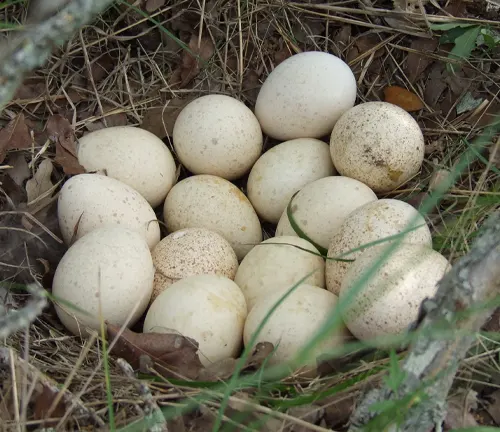

Reproduction
Rio Grande Wild Turkeys typically breed in the spring, with the onset of warmer weather triggering reproductive behaviors. Some key aspects of their reproductive behavior include:
- Courtship Displays: During the breeding season, male turkeys, known as toms, engage in elaborate courtship displays to attract females, known as hens. These displays involve puffing up their plumage, strutting, fanning out their tails, and emitting loud vocalizations to impress potential mates.
- Mating Rituals: Once a male turkey successfully attracts a female, mating rituals ensue. Toms may engage in vocalizations and physical displays of dominance to establish their suitability as mates. Successful mating typically occurs after courtship rituals.
- Nesting Behavior: After mating, female turkeys, or hens, seek out suitable nesting sites to lay their eggs. Nesting behavior typically occurs on the ground, concealed in dense vegetation such as tall grasses, shrubs, or underbrush. The hen prepares a shallow depression in the soil, known as a nest scrape, and lines it with leaves, grass, and other vegetation for insulation.
Nesting
The nesting process of Rio Grande Wild Turkeys involves several stages:
- Nest Site Selection: Hens carefully select a suitable nesting site that provides protection from predators and environmental elements. Nest sites are typically located in secluded areas with dense vegetation and good visibility.
- Egg Laying: Once a nest site is chosen, the hen begins laying a clutch of eggs, typically one egg per day. Clutch sizes can vary but typically range from 8 to 15 eggs, depending on factors such as the age and health of the hen.
- Incubation: After the clutch is complete, the hen begins incubating the eggs to facilitate embryonic development. Incubation lasts approximately 28 days, during which the hen remains dedicated to keeping the eggs warm and protected.
- Hatching: After the incubation period, the eggs hatch, and the young turkeys, known as poults, emerge from the shells. Poults are precocial, meaning they are born with their eyes open and are capable of walking and feeding shortly after hatching.
- Brood Rearing: The hen assumes the primary responsibility for caring for and protecting the poults. She leads them in search of food, provides warmth and protection from predators, and teaches them essential survival skills. The poults remain with the hen until they are old enough to fend for themselves, typically around 4 to 6 weeks of age.
Threats and Conservation Status
Despite their adaptability, Rio Grande Wild Turkey populations face threats from habitat loss, predation, and hunting. Conservation efforts, including habitat restoration and regulated hunting, are crucial for maintaining healthy populations. Here’s information about the threats and conservation status of the Rio Grande Wild Turkey:
Threats
The Rio Grande Wild Turkey faces several threats to its survival, primarily due to human activities and habitat degradation. Some key threats include:
- Habitat Loss and Fragmentation: The conversion of natural habitats for agricultural, urban, and industrial development results in the loss and fragmentation of suitable turkey habitat. This loss of habitat reduces available food sources, nesting sites, and roosting areas for Rio Grande Wild Turkeys.
- Predation: Rio Grande Wild Turkeys are vulnerable to predation by natural predators such as coyotes, bobcats, foxes, and large birds of prey. Increased predation pressure, often exacerbated by habitat fragmentation, can negatively impact turkey populations, especially during nesting and brood-rearing periods.
- Hunting: Unregulated or excessive hunting can pose a significant threat to Rio Grande Wild Turkey populations, particularly if harvest levels exceed sustainable limits. Over-harvesting can lead to population declines and disrupt natural breeding dynamics within turkey populations.
- Disease and Parasites: Like other wildlife species, Rio Grande Wild Turkeys are susceptible to various diseases and parasites that can affect their health and reproductive success. Disease outbreaks and parasite infestations can weaken turkey populations and contribute to population declines.
Conservation Status
The conservation status of the Rio Grande Wild Turkey varies depending on regional populations and habitat conditions. However, overall, the species is considered to have a stable population trend. Some key conservation efforts aimed at protecting Rio Grande Wild Turkey populations include:
- Habitat Conservation: Conservation organizations and government agencies work to protect and restore critical turkey habitat through land acquisition, habitat restoration, and conservation easements. These efforts aim to preserve essential foraging, nesting, and roosting areas for Rio Grande Wild Turkeys.
- Hunting Regulations: State wildlife agencies implement hunting regulations and harvest quotas to ensure sustainable turkey populations. These regulations include specific hunting seasons, bag limits, and restrictions on hunting methods to prevent overexploitation of turkey populations.
- Predator Management: Wildlife management agencies may implement predator control programs to reduce predation pressure on turkey populations, particularly during sensitive periods such as nesting and brood-rearing seasons.
- Research and Monitoring: Scientists and conservationists conduct research and monitoring programs to assess turkey populations, identify threats, and develop conservation strategies. These efforts help inform management decisions and prioritize conservation actions to benefit Rio Grande Wild Turkey populations.
Different Species
Eastern Wild Turkey
(Meleagris gallopavo silvestris)
Found in the eastern United States and parts of Canada, characterized by dark plumage and large body size.
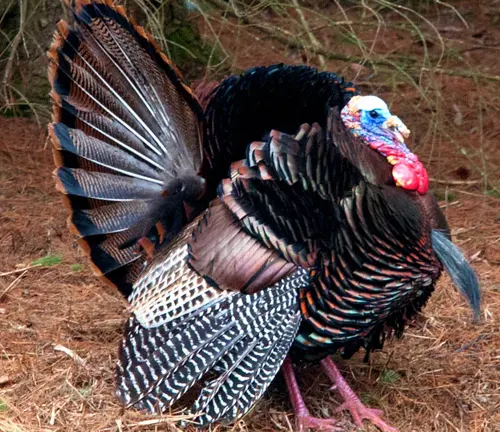
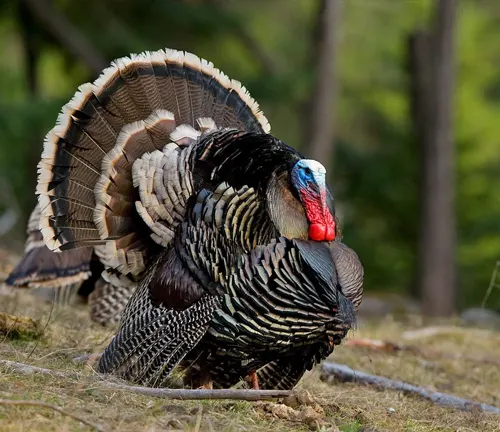
Merriam’s Wild Turkey
(Meleagris gallopavo merriami)
Inhabit the mountainous regions of the western United States, known for their light-colored plumage and long, slender legs.
Osceola Wild Turkey
(Meleagris gallopavo osceola)
Endemic to the Florida peninsula, distinguished by their smaller size and rich, dark plumage.

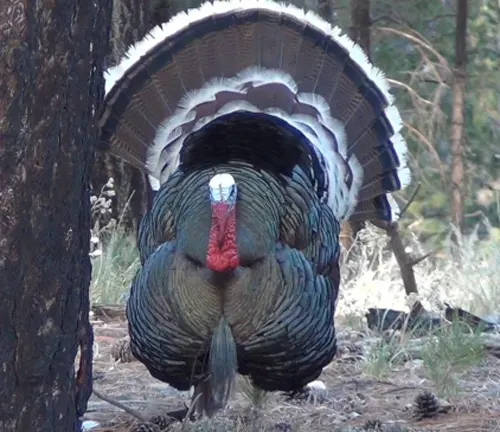
Gould’s Wild Turkey
(Meleagris gallopavo mexicana)
Native to northern Mexico and limited areas of the southwestern United States, recognized for their vibrant plumage and long, slender legs.
Frequently Asked Questions (FAQs)
- What is the habitat preference of the Rio Grande Wild Turkey?
Rio Grande Wild Turkeys prefer habitats consisting of open woodlands, brushlands, and grasslands near water sources such as rivers and streams. - How can I attract Rio Grande Wild Turkeys to my property for birdwatching?
Providing food sources such as grains and seeds, creating natural cover with shrubs and trees, and avoiding disturbances can attract Rio Grande Wild Turkeys to your property. - What is the social structure of Rio Grande Wild Turkey flocks?
These turkeys are often seen in flocks consisting of several hens and their offspring led by a dominant tom. - What are the distinctive physical features of Rio Grande Wild Turkeys?
They are characterized by their bronze-colored iridescent plumage, long legs, and beard-like feathers on males. - Are Rio Grande Wild Turkeys endangered?
While they face threats from habitat loss, predation, and hunting, Rio Grande Wild Turkeys are not considered endangered. Conservation efforts are in place to ensure their survival. - How long do Rio Grande Wild Turkeys live in the wild?
On average, Rio Grande Wild Turkeys have a lifespan of 3 to 5 years in the wild, although some individuals may live longer. - What are the main predators of Rio Grande Wild Turkeys?
Predators of Rio Grande Wild Turkeys include coyotes, bobcats, foxes, and large birds of prey. - Do Rio Grande Wild Turkeys roost in trees?
Yes, Rio Grande Wild Turkeys roost in trees at night for protection from predators. - Are Rio Grande Wild Turkeys good for the ecosystem?
Yes, they play a vital role in their ecosystem as seed dispersers, insect predators, and prey for larger predators, contributing to biodiversity and ecosystem balance. - Can I hunt Rio Grande Wild Turkeys?
Yes, hunting of Rio Grande Wild Turkeys is regulated by state wildlife agencies, with specific seasons and bag limits established to ensure sustainable harvests.


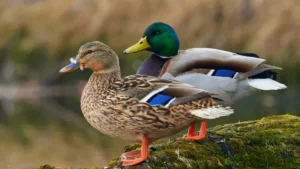
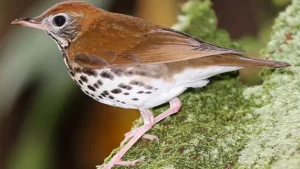
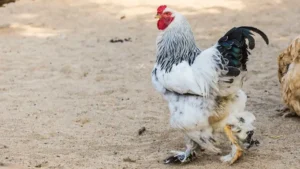
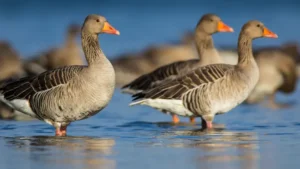
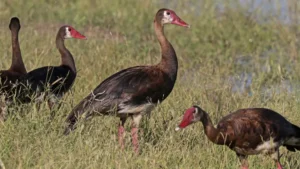


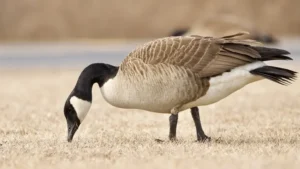
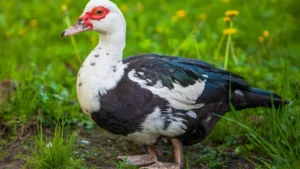
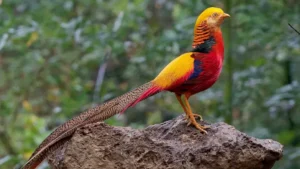
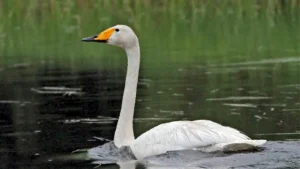
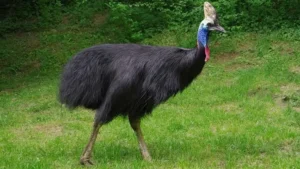
Leave your comment